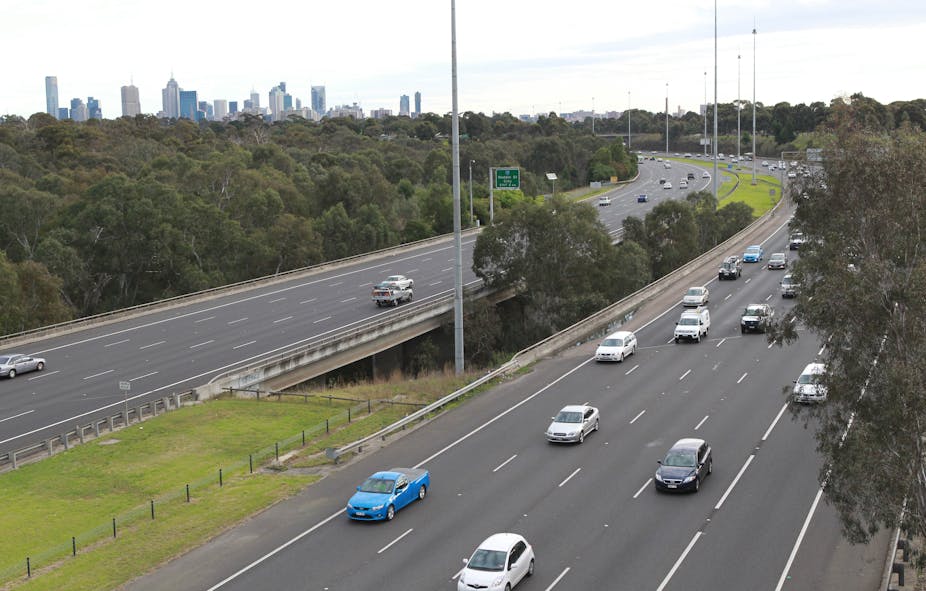Infrastructure is about the long-term growth and prosperity of a nation, but Australia will get very little of this benefit if the cost of building it continues to rapidly escalate.
Australia is becoming increasingly uncompetitive in design and delivery of major projects. This is an unacceptable situation, and a newly commissioned multi-state inquiry by the SMART Infrastructure Facility will identify the key causes and make recommendations to help secure better value for taxpayers’ money.
Australian jurisdictions have experienced sharp rises in the cost of delivering mega-projects. In the pre-GFC mining construction boom period of the mid-2000s construction costs were 20-30% higher than previous levels. Infrastructure projects continue to get larger and, therefore, more risky, so relatively small percentage increases in design and construction costs translate into very large dollar costs.
Certainly the pre- and post-GFC resources booms put upward pressure on scarce labour, equipment and raw materials but this does not appear to explain the full extent of the cost inflation. Put another way, some of the increases in the cost of large projects during the boom years has persisted and seems permanent.
The Business Council of Australia is concerned about Australia’s attractiveness to invest. Australia’s hospitals are 62% more expensive to build, shopping centres 43% and schools 26% than OECD peers. Australia’s onshore resource projects are 40% more expensive than the US Gulf Coast and offshore projects are 200% more expensive.
A big challenge has been Australia’s near 20-year super investment cycle. This created the perfect storm with mining booms I and II coincided with an asset renewal mega-cycle in electricity as well as billions in new investment in water security in south east Queensland and other parts of Australia struggling with the threat of drought. The result was escalating design, engineering, construction, raw materials and equipment costs.
Investment in transport, electricity, gas and water has grown above trend over the past decade. This may have reflected a catch up from under investment in earlier decades, as well as poor regulatory incentives to over build.
Hidden drivers, massive cost
Many of the cost drivers are hidden, at times subtle and small but cumulatively can be very significant on project costs. These include changes to technical standards (over-engineering), environmental and planning requirements, safety standards and treatment of contingencies in contracts. Quality of project delivery teams and particularly project directors is likely to be very important as well.
The Queensland and NSW Governments have sponsored the Cost of Infrastructure Project at the SMART Infrastructure Facility, University of Wollongong. They realise the importance of getting on the front foot to, first, understand the drivers of rising infrastructure costs in roads and rail projects, particularly for ‘mega-projects’ and, second, to better control costs so that taxpayers are more likely to receive better value for money.
High and uncertain costs are also very relevant to the incentives for private investment in public infrastructure. For instance, it is difficult enough for prospective private investors to manage green-field and patronage risk with new assets such as toll roads and renewable energy projects. But when we add to that a risk premium for rising project construction costs, it is difficult for mega-projects to pass stringent commercial testing.
Arresting the loss of long term planning is critical to lower infrastructure costs. All jurisdictions face extreme scarcity of available land, especially separated transport corridors for freight and passengers in already built-up areas. As demonstrated recently with the Southern Sydney Freight Line, right of way to passenger services impacts design, longer delivery time and much higher capital and labour costs.
More generally, the lack of land-use planning in cities has required expensive tunnels when surface access would have been cheaper. Environmental regulation further exacerbates costs without a proper evaluation of benefits.
Rushing in the wrong direction
Urgency has played an unnecessarily big role in Australia resulting in the wrong assets being built. The Brisbane Western Corridor Recycled Water Pipeline is a case in point. Before the situation became potentially catastrophic, long term planning with the community on the merits of water recycling could have been a far cheaper way of securing water security.
Finally, an institutional mind shift is required where infrastructure should not be just a counter cyclical economic policy past time. The infrastructure industry does not function well as a ‘short-order’ cook. It needs greater certainty with projects that will come to market over 10 to 15 years. This will provide a better environment for investment in capabilities to drive innovation, streamline delivery, purchase productivity-enhancing equipment and invest in highly trained personnel.
The SMART Infrastructure Facility will report on the cost of infrastructure inquiry in first half of 2014.

